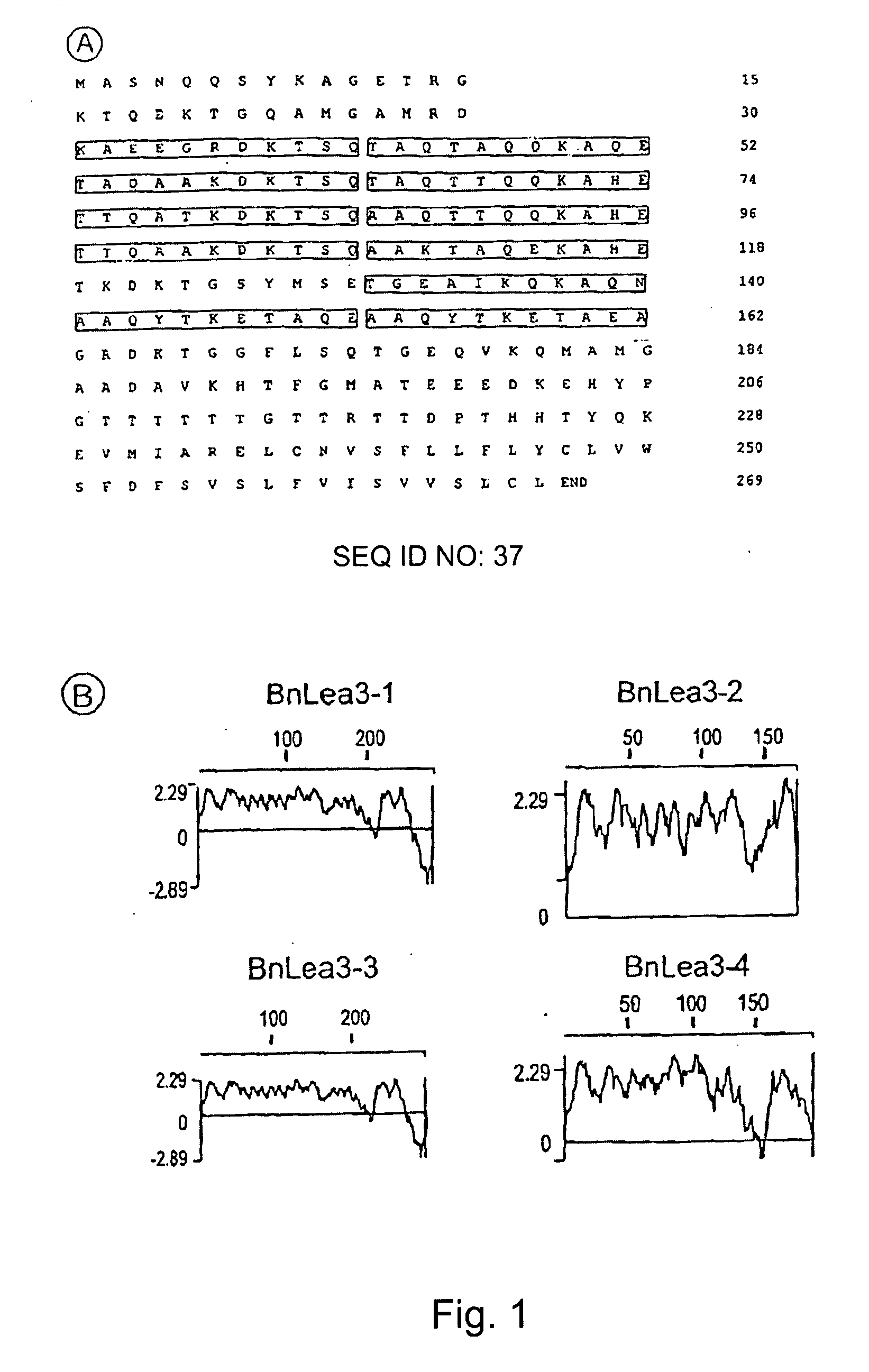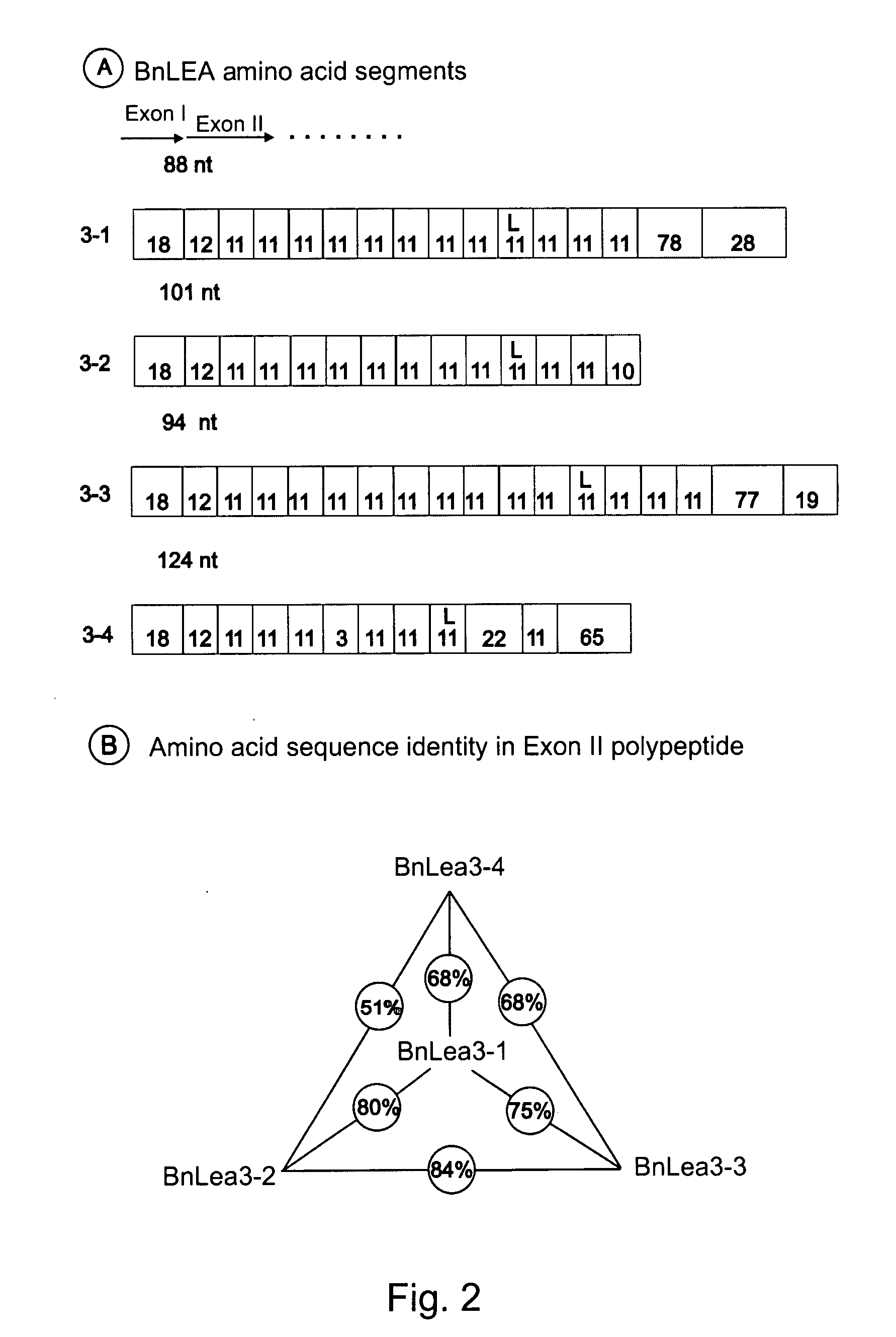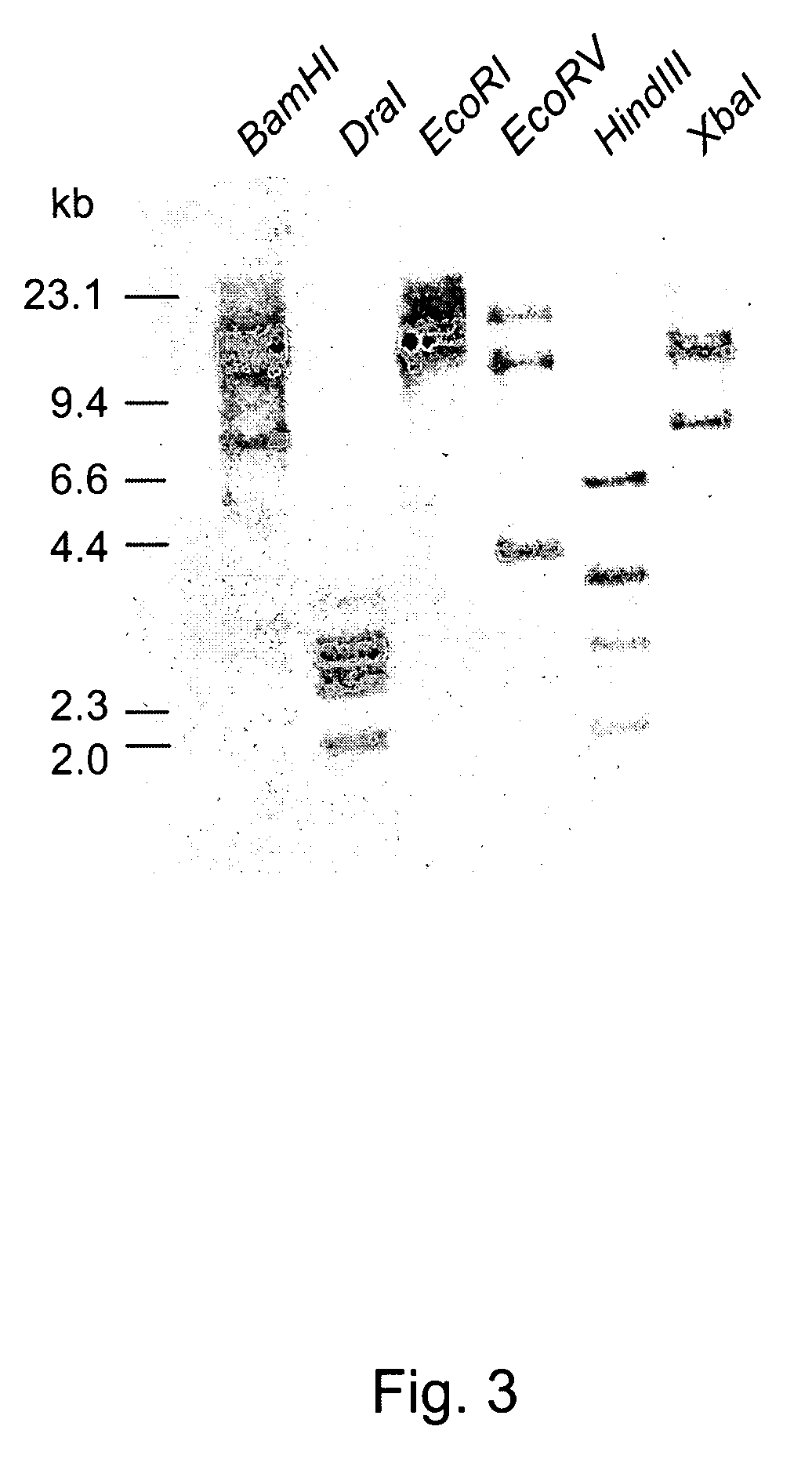BNLEA3-1 promoter
a promoter and bnlea technology, applied in the field of promoters for molecular farming and/or early detection of transgenic plants, can solve the problems of irreversible damage to oraganelles, membranes, proteins and enzymes, and increase of ion concentration, and achieve weak inducibility
- Summary
- Abstract
- Description
- Claims
- Application Information
AI Technical Summary
Benefits of technology
Problems solved by technology
Method used
Image
Examples
Embodiment Construction
[0028]Currently there is substantial interest in altering seed development and metabolism. However, the widely used cauliflower mosaic virus 35S promoter from CaMV virus is not very active in seeds. Many abundantly expressed genes including seed storage proteins tend to be less active toward the later stages of seed development. Therefore, we decided to isolate seed-active promoters from B. napus and to functionally test them in B. napus and heterologous systems such as tobacco. In some plants such as cotton certain proteins known as LEA are accumulated during late seed development. We decided to isolate candidate genes by screening a genomic library of B. napus. The candidate genes could then be tested for expression and useful promoters could be characterized thereafter.
[0029]The regulatory sequences of candidate genes that are identified (as indicated above) would be furor characterized for their activity in B. napus and tobacco and pea. The promoter-GUS chimerical constructs wou...
PUM
| Property | Measurement | Unit |
|---|---|---|
| Fraction | aaaaa | aaaaa |
| Volume | aaaaa | aaaaa |
| Volume | aaaaa | aaaaa |
Abstract
Description
Claims
Application Information
 Login to View More
Login to View More - R&D
- Intellectual Property
- Life Sciences
- Materials
- Tech Scout
- Unparalleled Data Quality
- Higher Quality Content
- 60% Fewer Hallucinations
Browse by: Latest US Patents, China's latest patents, Technical Efficacy Thesaurus, Application Domain, Technology Topic, Popular Technical Reports.
© 2025 PatSnap. All rights reserved.Legal|Privacy policy|Modern Slavery Act Transparency Statement|Sitemap|About US| Contact US: help@patsnap.com



